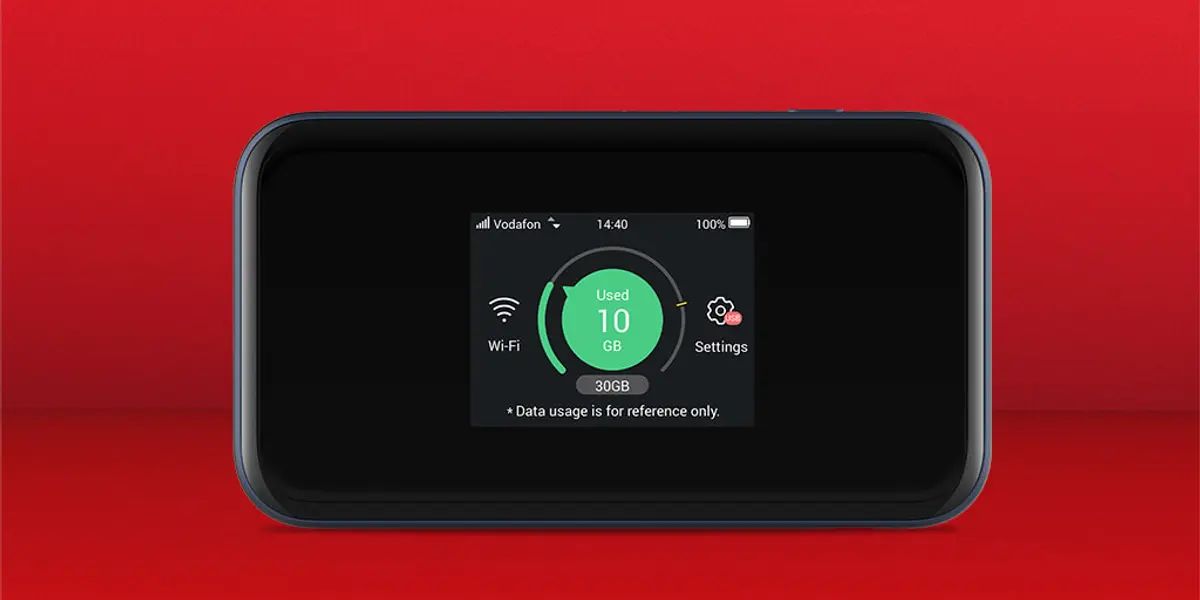Introduction
As the world becomes increasingly digitalized, online gaming has become a popular form of entertainment for millions of people worldwide. With the rise of mobile and internet technologies, gamers can now connect with each other from different corners of the globe, immersing themselves in a virtual universe of fantasy and excitement.
However, what many players may not realize is the significant amount of data that is consumed in the process of online gaming. Every action they take, every move they make, generates a stream of data that is transmitted over the internet. From downloading game updates to interacting with other players in real-time, online gaming relies heavily on data consumption.
In this article, we will delve into the world of online gaming and examine just how much data is consumed in this virtual realm. We will explore the various types of data that are generated and how different online games consume data differently. We will also discuss the factors that can affect data usage in online gaming and provide strategies to optimize data consumption.
By gaining a better understanding of the data consumption in online gaming, players can make informed decisions about their internet usage and explore ways to optimize their gaming experience without exceeding their data limits or experiencing unnecessary lag.
So, if you’re ready to uncover the data-driven world of online gaming, let’s dive in and explore the fascinating relationship between gaming and data consumption.
The Online Gaming Industry
The online gaming industry has experienced exponential growth over the past decade, driven by advancements in technology and the increasing accessibility of the internet. What was once a niche market has now transformed into a multi-billion dollar industry that attracts players of all ages and backgrounds.
One of the main reasons for the industry’s success is the wide range of gaming options available to players. From massively multiplayer online role-playing games (MMORPGs) to first-person shooters (FPS), there is something for everyone. The industry caters to a diverse audience with various preferences, allowing players to choose games that align with their interests and play styles.
Online gaming offers players the opportunity to connect with others in virtual worlds, fostering a sense of community and camaraderie. Through social features such as chat functions and multiplayer modes, gamers can interact with fellow players, form alliances, and compete against each other in real-time.
Moreover, the advent of mobile gaming has further propelled the growth of the industry. With smartphones becoming increasingly powerful and capable of running complex games, more people than ever can access online gaming platforms anytime, anywhere.
In terms of revenue, the online gaming industry is thriving. The monetization models vary, with some games adopting a free-to-play model supported by in-game purchases, while others require players to pay for access or subscriptions. Additionally, esports, or competitive online gaming, has become a significant revenue stream, attracting sponsorships and investments from companies across various industries.
Overall, the online gaming industry has become a global phenomenon, captivating millions of players and shaping the entertainment landscape. With advancements in technology and the increasing popularity of virtual reality (VR) and augmented reality (AR), the future of online gaming looks promising, promising even more immersive experiences for players.
How Data is Consumed in Online Gaming
Online gaming is a data-intensive activity that requires a constant flow of information between the player’s device and the game servers. This data consumption can occur in various ways, depending on the type of game and the actions performed by the player.
One of the primary ways data is consumed in online gaming is through game downloads and updates. When a player installs a new game, they need to download the game files, which can be several gigabytes in size. Additionally, games often release updates to fix bugs, add new features, or improve performance, requiring players to download these patches to stay up-to-date.
Once the game is installed and updated, data consumption continues as players connect to the game servers. This connection establishes a constant flow of data as the player interacts with the game world, other players, and any online features or services provided by the game.
In multiplayer games, real-time communication with other players is essential. This communication can include voice chat, text chat, or even streaming gameplay footage. Each of these actions consumes data as it is transmitted between players, enabling them to coordinate strategies, communicate tactics, or simply engage in friendly banter.
Another significant source of data consumption in online gaming is the constant exchange of game state information. As players move, interact with the game environment, or perform actions, this data needs to be transmitted to the game servers to ensure synchronization with other players and maintain a consistent game experience for everyone involved.
Furthermore, online gaming platforms often provide additional features and services that enhance the gameplay experience. These can include leaderboards, player profiles, in-game purchases, and social features. Each interaction with these services consumes data, particularly when retrieving information or making transactions.
It’s important to note that the amount of data consumed in online gaming can vary significantly depending on the game and the actions performed by the player. Games with high-quality graphics, complex game mechanics, and extensive online features may consume more data compared to simpler, less resource-intensive games.
In the next section, we will explore the different types of data generated in online gaming and how they contribute to the overall data consumption.
Types of Data Generated in Online Gaming
Online gaming generates various types of data, each serving a specific purpose in creating an immersive and interactive experience for players. These data types encompass both gameplay-related information and the necessary infrastructure to support online interactions.
One of the primary types of data in online gaming is player input. Every action performed by a player, such as moving their character, attacking, or using items, generates input data. This data is crucial in determining the outcome of in-game events and affecting the game world. It is transmitted to the game servers, where it is processed and synchronized with other players’ actions.
In addition to player input, game telemetry data is also generated. Telemetry data encompasses various metrics and statistics related to gameplay. This data includes information such as the player’s progression, achievements, game statistics (e.g., kills, deaths, accuracy), and other relevant gameplay metrics. Game telemetry data is often used for analyzing player behavior, balancing game mechanics, and enhancing the overall game experience.
Another type of data generated in online gaming is network and performance data. This data includes information about the player’s connection quality, latency, packet loss, and bandwidth usage. It enables the game servers to optimize network performance and ensure a smooth and lag-free gameplay experience for players. Network and performance data also contribute to matchmaking algorithms, ensuring that players with similar connection qualities are grouped together for fair and balanced gameplay.
Furthermore, online gaming platforms generate data related to player interactions and social features. This can include chat logs, friend lists, player profiles, and community forums. These data facilitate player engagement, communication, and the formation of social connections within the gaming community.
Lastly, game metadata is generated in online gaming. Metadata includes information about the game itself, such as the game title, version number, release date, and descriptions. It also encompasses information about game updates, patch notes, and any additional content or expansions released for the game. Game metadata is essential for keeping players informed about the latest developments and ensuring compatibility between different versions of the game.
Overall, the types of data generated in online gaming serve various purposes, including gameplay mechanics, network optimization, player engagement, and communication. Understanding these data types is crucial in managing data consumption and optimizing the gaming experience.
Data Consumption in Different Online Games
Data consumption in online games can vary significantly depending on the type of game and its specific requirements. Different genres and gameplay mechanics have varying degrees of data intensity, influencing the amount of data consumed during gameplay.
Massively multiplayer online role-playing games (MMORPGs) are known for their extensive game worlds, rich graphics, and large player populations. These games often require a constant flow of data to synchronize the actions of numerous players in real-time. MMORPGs require a substantial amount of data to update player positions, facilitate social interactions, render complex environments, and manage the game’s economy. Consequently, MMORPGs typically consume a significant amount of data during gameplay.
First-person shooters (FPS) typically have fast-paced, action-packed gameplay that relies heavily on real-time communication and precise aiming. FPS games require a constant exchange of data to synchronize player movements, projectile trajectories, and environmental changes. Additionally, voice chat and real-time audio communication contribute to data consumption in FPS games. However, compared to MMORPGs, FPS games typically consume less data due to their focus on relatively smaller player counts and simpler game environments.
Real-time strategy (RTS) games, on the other hand, have unique data consumption patterns. These games involve managing resources, commanding virtual armies, and strategizing against opponents. RTS games require continuous data updates to synchronize the game state across all players, manage resource allocation, and simulate complex AI behaviors. While RTS games may not have the same level of graphical intensity as MMORPGs, they still rely on a significant amount of data transmission to maintain real-time gameplay.
Sports and racing games have their own data consumption dynamics. These games often focus on player positioning, physics simulations, and real-time calculations. Data consumption in sports and racing games is heavily influenced by the number of players, the complexity of game physics, and the amount of detail rendered in the game environment. While these games may not necessarily consume as much data as MMORPGs, they still require a stable and reliable network connection to ensure smooth gameplay and minimize lag.
It’s important to note that the specific data consumption of each game can vary based on factors such as game optimization, network condition, and player actions. Additionally, game developers may implement techniques to compress data or minimize unnecessary data transfers to optimize the gaming experience while minimizing data usage.
By understanding the data consumption patterns in different online games, players can make informed decisions about their internet connection, choose games that align with their data plans, and optimize their gaming experience accordingly.
Factors Affecting Data Usage in Online Gaming
Data usage in online gaming can be influenced by various factors, ranging from the game’s design and technical requirements to the player’s actions and network conditions. Understanding these factors can help players manage their data consumption more effectively and optimize their gaming experience.
One of the primary factors affecting data usage is the game’s graphical fidelity and level of detail. Games with high-resolution textures, complex character models, and realistic environmental effects require more data to transmit and render. The more visually stunning a game is, the more data it will consume during gameplay. Players should consider adjusting their graphical settings to strike a balance between visual quality and data usage.
The type of game also plays a role in data consumption. As mentioned earlier, different genres have varying degrees of data intensity. MMORPGs and real-time strategy games, for example, tend to require more data due to the need for real-time synchronization and rendering complex game environments. On the other hand, simpler games like puzzle or casual mobile games typically consume less data due to their lower complexity and smaller file sizes.
Player actions and gameplay style can impact data usage as well. Engaging in fast-paced, action-packed gameplay that involves frequent movement, combat, and interactions with other players generates more data compared to slower-paced gameplay. Additionally, activities such as streaming gameplay, recording videos, or utilizing voice chat services contribute to higher data usage.
Network conditions also influence data consumption in online gaming. A stable and reliable internet connection is essential to maintain a smooth gaming experience. However, network fluctuations, high latency, or packet loss can result in increased data usage as the game attempts to synchronize player actions and compensate for connection issues. It’s advisable to play on a stable and fast internet connection to minimize disruptions and optimize data usage.
Furthermore, game developers play a significant role in controlling data usage through optimization techniques. Developers may implement data compression algorithms or minimize unnecessary data transfers to reduce data consumption without compromising the gaming experience. Regular game updates and patches can also address performance and optimization issues, potentially reducing data consumption in the process.
Lastly, players should be mindful of any background applications or processes that may consume bandwidth while gaming. Streaming services, file downloads, and automatic updates running simultaneously can compete for bandwidth and increase data usage. Closing unnecessary applications and managing bandwidth usage can help optimize data consumption while gaming.
By considering these factors and making informed choices, players can better manage their data usage in online gaming, ensuring a seamless gameplay experience without exceeding their data limits or facing unnecessary performance issues.
Strategies to Optimize Data Usage in Online Gaming
Optimizing data usage in online gaming involves implementing various strategies to minimize the amount of data consumed without compromising the gaming experience. By following these strategies, players can manage their data consumption effectively, avoid exceeding data caps, and maintain a smooth and enjoyable gameplay experience.
Adjusting in-game settings is one of the simplest ways to optimize data usage. Graphics settings such as texture quality, shadow resolution, and anti-aliasing can significantly impact data consumption. Lowering these settings can reduce the amount of data required to render the game without sacrificing overall visual quality.
Monitoring and limiting background processes can also help optimize data usage. Closing unnecessary applications, especially those that consume bandwidth or run automatic updates, can free up network resources for the game. Additionally, disabling automatic updates for the operating system and other software can prevent unexpected data usage during gameplay.
Regularly updating games can be beneficial in terms of optimizing data usage. Game developers often release updates to address bugs and performance issues, which can include optimization improvements. By keeping games up to date, players can benefit from these optimizations, potentially reducing data consumption in the long run.
Metered data connections, such as mobile data plans with limited monthly allowances, require careful management. Setting data usage limits within the game’s settings or using third-party applications can help track and manage data consumption. These tools can provide real-time data usage information and even set automatic notifications or caps when a certain threshold is reached.
Choosing games with lower data consumption can be a proactive approach to optimize data usage. Games that have smaller file sizes or do not heavily rely on constant data transmission can be more suitable for players concerned about their data limits. Additionally, single-player or offline games can be a good alternative for players who want to enjoy gaming without the need for constant internet connectivity.
Consider utilizing a content delivery network (CDN) or game server closer to your location. Connecting to a server that is geographically closer can reduce latency and improve overall network performance, potentially reducing data usage. Some online games provide options to manually select the game server or use automated regional settings to connect to the most optimal server.
Finally, using a data-saving mode or feature provided by some game clients or network providers can help optimize data usage. These features typically reduce the bandwidth used by the game, compress data, or prioritize essential game-related data over non-essential content. Enabling such modes can be especially beneficial when playing games on mobile data networks with limited data allowances.
By following these strategies, players can optimize data usage in online gaming and ensure a smoother gaming experience while effectively managing their data consumption.
Conclusion
Online gaming has become a ubiquitous form of entertainment, captivating millions of players worldwide. As the popularity of online gaming continues to grow, understanding data consumption becomes essential for optimizing the gaming experience.
In this article, we explored the world of data consumption in online gaming. We discussed the factors that influence data usage, including game design, player actions, network conditions, and developer optimizations. By considering these factors, players can make informed decisions to minimize data consumption without compromising the quality of their gameplay.
We examined the different types of data generated in online gaming, ranging from player inputs to game telemetry and network performance data. Each type of data serves a specific purpose in creating an immersive and interactive gaming experience.
We also explored how data consumption can differ across different genres of online games. Massively multiplayer online role-playing games (MMORPGs), first-person shooters (FPS), real-time strategy games (RTS), and sports and racing games each have their own data consumption dynamics, influenced by gameplay mechanics, graphics, and network requirements.
Lastly, we provided strategies to optimize data usage in online gaming. Adjusting in-game settings, monitoring and limiting background processes, keeping games updated, and utilizing data-saving modes are just a few of the strategies that players can employ to manage their data consumption effectively.
By implementing these strategies and understanding the various factors that impact data usage, players can strike a balance between enjoying their favorite online games and optimizing their data usage. With the ever-evolving landscape of online gaming, staying mindful of data consumption will continue to be important for players looking to make the most out of their gaming experiences.

























